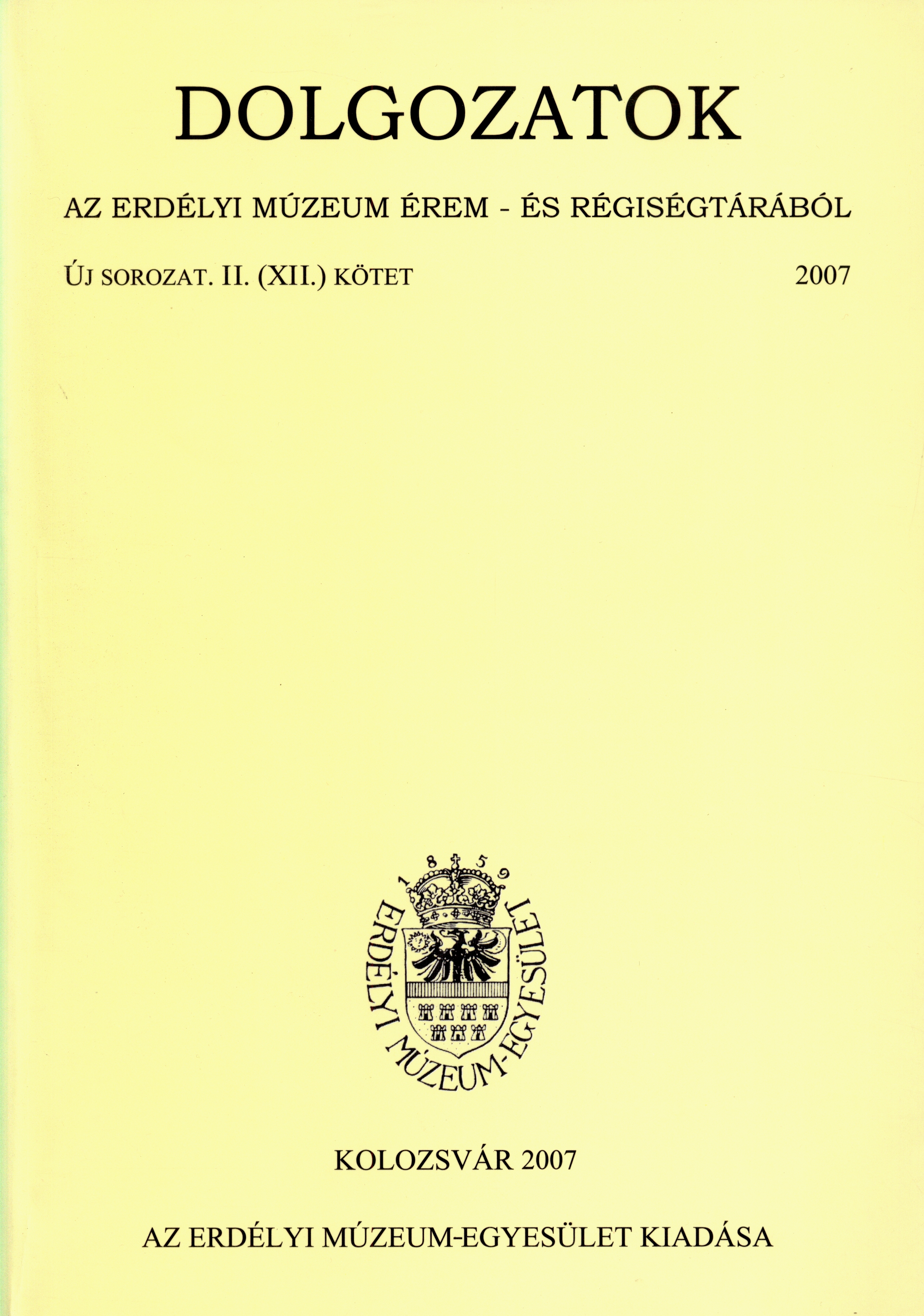Kora bronzkori leletek a Fekete- és Sebes-Körös-vidéki barlangokból
Early Bronze Age Discoveries from the Izbucu Topliţei Cave (Bihor County)
The Issue of the Roşia Group
Author(s): Zsolt Molnár-Kovács, Călin GhemișSubject(s): Archaeology, Cultural history, Ancient World
Published by: Erdélyi Múzeum-Egyesület
Keywords: early bronze age; archaeology
Summary/Abstract: The origins and the development of the human communities in the IInd period of the Early Bronze Age in the valley of the Crişul Negru and Repede rivers (from Northwestern part of Transylvania) are linked to the issue and historical evolution of the Roşia group. The study of the so called Roşia or Gyula-Roşia group started in 1980, when János Emődi and Gábor Halassi made important archaeological discoveries in the valley of the Crişul Negru and Crişul Repede rivers. In spite of the further researches done by P. Roman, J. Németi, J. Emődi and others, some questions referring to the origins and social development of the Roşia group or its territorial expansion are still unanswered. Dealing with the issue of the Roşia group we faced many differences in the Romanian and Hungarian archaeological literature especially regarding the origins of the Roşia (-Gyula) group. Another main problem is raised by the lack of the discovered settlements belonging to aforementioned Early Bronze Age group. The known archaeological repertory of the Roşia group, contains quarry- and cave-discoveries, which were considered settlements by different researchers. In consequence they see the bearers of the Roşia group as communities living in caves The main target of this paper is the revaluation of the Roşia type discoveries found in the valley of the Crişul Negru and Crişul Repede rivers (9 caves and quarries). The majority of the archaeological items were brought to light by Emődi János after many years of research. The aforementioned archaeological discoveries are just partially studied even today. We want to complete the former scientific results, by giving a well-structured shape and ornament repertory of the Roşia pottery and by analysing the discovered ceramic and gold or bronze artefacts. To conclude: The 7 caves and 2 quarries from the valley of the Crişul Negru and Crişul Repede rivers can be identified as cultic-funerary complexes. From terminological point of view we don't exclude the possibility to use the Roşia group expression for the discoveries dated to the 2nd period of the Early Bronze Age, but also believe that in the actual state of the research (we don't know any Roşia settlement in North-western Transylvania), it should rather be called "Roşia type discoveries".
Journal: Dolgozatok az Erdélyi Múzeum Érem- és Régiségtárából. Új sorozat
- Issue Year: 2007
- Issue No: II
- Page Range: 67-96
- Page Count: 30
- Language: Hungarian

